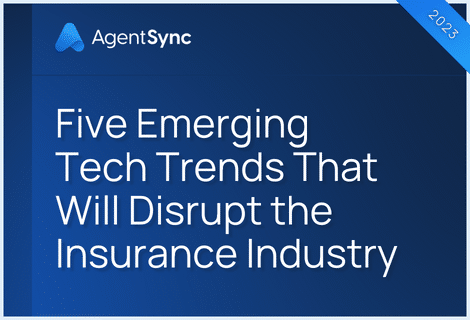

Workers comp insurance is a multi-billion-dollar industry in the U.S.
Workers compensation insurance is required in most states for any business that has even one employee. With a few exceptions – farm workers, domestic staff, and close family members are among those often excluded – a workers comp policy should* cover nearly every employee in the country. And for good reason! Workers comp insurance helps employees who’ve suffered an injury or illness in the workplace by covering medical and rehabilitation expenses. It also helps employers lower their liability for accidents that happen on their watch by allowing the employer to compensate the employee without admitting fault.
*For a deeper dive into why “should be” isn’t “are” you can look at some of the ways employers reduce their workers comp liability through insurance fraud.
In 2019, before employment numbers dropped significantly due to COVID-19 shutdowns, over 144 million U.S. employees were covered by a workers compensation insurance policy. That’s around 44 percent of the population that year, which makes sense considering children, retired people, and sole proprietors wouldn’t be covered by workers comp anyway.
And just how much does workers comp insurance cost employers? Data from 2021 shows U.S. insurers wrote a total of $52.25 billion in workers comp insurance. With its widespread coverage and large cost to employers, it’s no wonder that everyone involved – from insurance carriers to employers to employees – would like to find ways to reduce risks, costs, and claims.
Today’s workers comp insurance challenges
Similar to other lines of insurance that are facing challenges due to a hardening market, rising reinsurance costs, and overall inflation (just to name a few) workers compensation insurance is also reckoning with cost containment, among other issues.
According to a 2022 survey conducted by Risk & Insurance, workers comp stakeholders named their top challenges as:
- Healthcare provider shortages
- Healthcare cost inflation
- Increasingly complex claims
- Lawsuits and litigation
- Workplace safety concerns that haven’t existed before
- Workers (and the U.S. population in general) in poor health
- The insurance talent gap
- Changing regulations and increasing coverage requirements
- Legacy tech (or no tech at all)
- Cybersecurity risks
How modern technology can positively impact each of these areas could be the topic of an entire book (don’t tempt us to write one!). So for now, we’ll look specifically at how technologies like artificial intelligence (AI), predictive modeling, telematics, and the Internet of Things (IoT) can help prevent claims before they happen and identify costly fraud.
The Role of Technology in Workers Compensation
Modern-day American workers compensation insurance started back in 1911 when Wisconsin was the first state to pass a comprehensive workers comp law. And, over the last hundred-plus years, the basic premise has remained the same. It’s only in recent years that insurers and employers have begun to put an emphasis on risk management and risk reduction, rather than just compensating workplace accident victims.
As technology continues to evolve on a near-daily basis, so do workplace safety programs. Whereas a company might have gotten a lower workers comp premium in the past by establishing a workplace safety training program (complete with mandatory safety videos), there wasn’t an option to use wearable technology to monitor safety and prevent accidents before they happened. Nor was there a way to use AI to identify behaviors, places, and situations that were most likely to cause accidents and remedy them before one occurs. Now there are, and the workers comp insurance industry is on the cutting edge of using them.
Using technology to prevent workplace injuries
If an ounce of prevention is worth a pound of cure, then using tech to prevent injuries and accidents at work is the logical place to start. While injury prevention protocols of the past relied on people always following best practices and being vigilant about safety procedures, today’s preventive measures are a lot more sophisticated.
Wearable tech: From the simplest forms of wearable technology (monitoring heart rate or temperature), to the highly sophisticated injury prevention solutions coming out from companies like StrongArm and Kinetic, devices that keep tabs on employees’ real-time physical condition can be key to preventing injuries and sounding an early alarm before someone experiences an adverse medical event.
Video surveillance and analysis: CompScience is an “AI-powered accident prevention company” that uses a combination of video and AI to identify workplace risks based on patterns it recognizes after scanning hundreds of hours of workplace video. It promises to reduce workers comp claims by 23 percent, and recently became an MGA partner with Nationwide Insurance and Swiss Re.
Predictive modeling: Back in 2012, researchers were working to demonstrate that there was a way to predict workplace safety (and with high accuracy) based on several observable conditions. Teams from Predictive Solutions and Carnegie Mellon University (of IBM Watson fame) took 112 million safety observations from more than 15,000 worksites and developed models that could predict workplace safety incidents before they happened. Technology’s come a long way in the past decade, so it’s no surprise that “predictive analytics has emerged as a game changer in the field of workers’ compensation risk management.”
Using technology to detect fraud in workers comp insurance
According to the Coaltion Against Insurance Fraud (CAIF), insurance fraud costs $308.6 billion per year. Not all of this is in the form of workers compensation insurance fraud, but a non-nominal amount is: six to seven billion dollars per year. Even if only a portion of that can be attributed to employee fraud (false or exaggerated claims, for example), we’re still talking about billions of dollars each year that could be avoided if employers and insurers could reliably detect fraud before they pay for it. These are a few ways technology is making that possible.
Telematics: Not all workers comp claims are vehicle-related, but when they are, employers and insurance companies can use telematics to make sure the accident really happened on the job, the way someone claims, or even happened at all.
When a commercial vehicle is equipped with telematic sensors (simply put, a device that transmits vehicle data over the internet) companies can get immediate information about a vehicle crash. The type of data these telematic sensors transmit can do everything from predicting whether a driver is injured, and how badly, to helping identify who was at fault.
The data a telematic device sends can, on one hand, alert an employer to a potentially serious accident and have them send the employee for medical evaluation even if the person reports not being hurt, while at the same time, prove that a claimed “on the job injury” couldn’t have happened based on crash data like time, speed, route, or location.
Digital Twins: Insurance companies can use what’s known as digital twin technology to create virtual replicas of physical workplaces where they can then recreate accidents and injuries. In doing so, they can detect fraud by identifying claims that couldn’t have possibly happened the way a claimant describes, due to physical constraints or environmental conditions.
Machine Learning: Large insurers with the ability to invest in this level of advanced technology can use machine learning to sift through massive datasets to recognize patterns in previous insurance claims (both legitimate and fraudulent). With this knowledge, the systems can sort through claims in real-time to flag characteristics that might point towards fraud, allowing insurers to further investigate and avoid paying out claims they shouldn’t.
Other ways tech can save costs for insurers, agencies, MGAs, and MGUs
Preventing workplace accidents and fighting fraudulent claims are two ways modern technology can help employers and insurers cut down on unnecessary expenses. Another way is to use modern insurance infrastructure to automate the entire producer licensing and appointment process in a way that ensures compliance, without manual effort.
See how much money your organization could be saving by using AgentSync to cut down on wasted time and wasted money, and eliminate regulatory risk in your producer compliance process.

